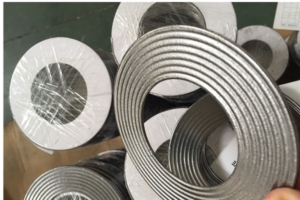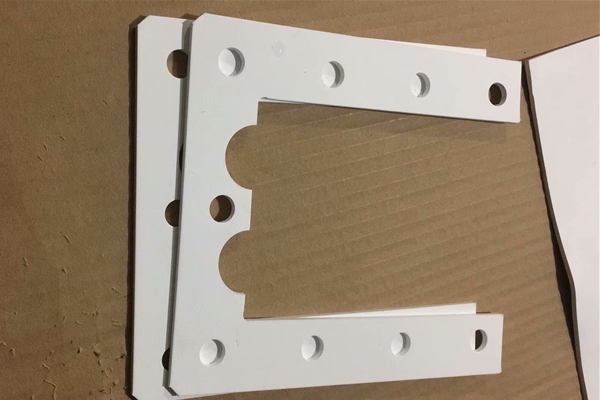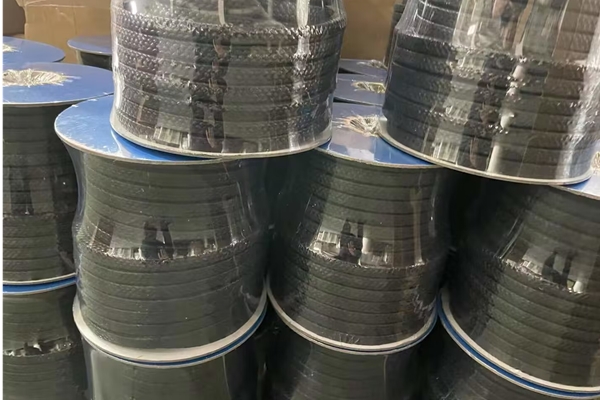Corrugated metal gaskets are specialized sealing solutions designed to provide reliable, leak-free performance between flange faces, pipe connections, and machinery interfaces. They feature a wave-like metal core structure that enhances resilience and spring-back capabilities, combined with soft sealing materials to maximize sealing effectiveness. Understanding how to select the ideal corrugated metal gasket for your application is critical to ensuring optimal sealing performance, operational efficiency, and equipment longevity.
1. Material Selection for Corrugated Metal Gaskets
Metal Corrugated Gaskets Characteristics:
Constructed from durable metals such as stainless steel or specialty alloys, metal corrugated gaskets offer exceptional strength, corrosion resistance, and thermal stability.
Applications:
Widely used in demanding sectors such as petrochemical plants, power generation facilities, and aerospace industries.
Advantages:
Their corrugated structure delivers superior resilience, requiring lower bolt loads for effective sealing. Ideal for applications where high clamping pressures are either impractical or undesirable.
Rubber Corrugated Gaskets Characteristics:
Rubber variants exhibit excellent elasticity and sealing capacity but have limited heat and chemical resistance.
Applications:
Suitable for general machinery, automotive applications, and household appliances that operate under ambient or low-pressure conditions.
Advantages:
Cost-effective, easy to install, and suitable for routine replacement in less demanding environments.
Plastic or Composite Corrugated Gaskets Characteristics:
These lightweight materials offer strong chemical resistance and high purity but have lower thermal and mechanical strength compared to metal alternatives.
Applications:
Ideal for sensitive applications in pharmaceutical, food processing, and specialized chemical processing industries.
Advantages:
Customizable to meet stringent purity and chemical compatibility requirements.
2. Selecting Gasket Size and Thickness
Matching Size to Equipment Interfaces
Choosing a gasket that accurately matches the interface dimensions of your equipment is crucial. Incorrect sizing can result in leaks or premature gasket failure. For irregular or custom interfaces, consider specially-designed corrugated metal gaskets to ensure a precise and effective fit.
Optimal Thickness
The gasket’s thickness directly influences compressibility, flexibility, and overall sealing effectiveness.
Thicker Gaskets: Suitable for large gaps or uneven surfaces requiring significant sealing compression.
Thinner Gaskets: Recommended for precision equipment and tight space constraints, offering precise fitting and tighter sealing under minimal compression.
3. Environmental Factors Influencing Gasket Selection
Temperature
High Temperature: For boilers, engines, or exhaust systems, select gaskets made from stainless steel or specialty alloys that can withstand thermal stresses without degradation.
Low Temperature: Choose cold-resistant rubber or composite gaskets for refrigeration or cryogenic environments to maintain sealing performance at lower temperatures.
Pressure
High Pressure: Metal corrugated gaskets offer optimal sealing integrity under high-pressure conditions, commonly seen in hydraulic systems and industrial pressurized applications.
Low Pressure: Rubber or plastic corrugated gaskets can provide sufficient sealing performance at lower costs, suitable for general industrial and consumer applications.
Chemical Compatibility
In aggressive chemical environments, such as exposure to strong acids, bases, or solvents, selecting corrosion-resistant materials like PTFE-coated corrugated gaskets or special alloys is essential to prevent premature gasket failure.
Vibration and Shock
For applications involving significant vibration or mechanical impact, rubber or composite corrugated gaskets provide superior elasticity and fatigue resistance, effectively absorbing shocks and maintaining a reliable seal.
4. Installation and Maintenance Best Operations
Proper Installation Procedures
Ensure all gasket surfaces and interfaces are thoroughly cleaned and free of contaminants before installation.
Apply bolt torque evenly and incrementally to prevent gasket deformation and ensure uniform sealing pressure.
Regular Inspection Protocol
Routinely inspect corrugated metal gaskets for signs of wear, deformation, or damage.
Shorten inspection intervals in demanding environments like high temperatures, high pressures, or corrosive atmospheres.
Replacement Recommendations
Always replace gaskets with matching specifications and materials for compatibility and optimal performance.
In demanding environments, consider upgrading to more robust materials or advanced corrugated gasket designs for extended service life and improved reliability.
5. Unique Advantages of Corrugated Metal Gaskets
Superior Resilience
The corrugated design significantly enhances the gasket’s spring-back capability, ensuring consistent sealing performance even under minimal bolt load conditions. This is particularly valuable in applications with limited clamping forces.
Reduced Sealing Surface Area
The wave-like structure minimizes the effective sealing surface area, reducing the required bolt torque. This not only simplifies installation but also improves sealing reliability, especially beneficial in sensitive or delicate equipment.
Improved Performance over Metal Jacketed Gaskets
Compared to traditional metal jacketed gaskets, corrugated metal gaskets deliver better adaptability, higher sealing performance, and longer service life, making them a superior choice for modern industrial sealing requirements.
Conclusion
Selecting the ideal corrugated metal gasket involves careful consideration of material compatibility, gasket dimensions, environmental influences, and installation best practices. Corrugated metal gaskets stand out for their resilience, adaptability, and exceptional sealing capabilities in demanding industrial environments. By adhering to these selection guidelines and maintaining regular inspections and replacements, industries can achieve enhanced operational reliability, safety, and efficiency in their sealing applications.





